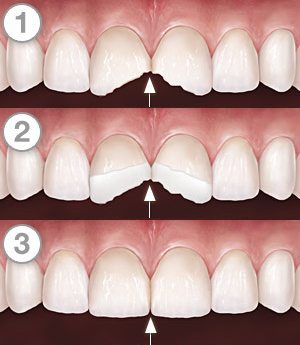The first line of defense for decaying teeth, or for a tooth that has been damaged, is what’s known as a dental filling.
A local anesthetic is used to numb the area, helping to mask any pain that could be felt when the dentist begins to remove decayed, or structurally unsound portions, of a natural tooth.
 There are many materials that can be used to fill a tooth. Most baby boomers still have silver, and gold, fillings; and although those two materials can still be used, our office tends to steer our patients towards composite resin fillings. This material can be matched to the shade of your teeth, and provides the most natural look possible.
There are many materials that can be used to fill a tooth. Most baby boomers still have silver, and gold, fillings; and although those two materials can still be used, our office tends to steer our patients towards composite resin fillings. This material can be matched to the shade of your teeth, and provides the most natural look possible.
Once the tooth is prepared, and the chosen material is in place, in order to achieve the final restoration, the next step is to shape the material to the area, allow it to cure, harden, and finally set. Fillings, like any other treatment, ranges in price for a whole host of factors, several of them include, but are not limited to, how much decay there already is, how many areas of the tooth must be filled, and how long the actual appointment will run.
Dental bonding, for all intents and purposes, follows the same pattern as a dental filling. Specific material is chosen to fill in, build up, or otherwise repair a natural tooth. The major difference between the two is that a filling works on functionality, and helps to prolong the life of the tooth. Bonding helps with functionality, helps to prolong the life of the tooth, and delivers a cosmetic element, by improving the appearance. Bonding uses material to shape a tooth, change it’s color, or enhances other aesthetic aspects of the tooth.
Again, the material we steer most of our patient toward is composite resin. Interestingly enough, unlike a filling, with bonding, anesthesia is not always required. If you need a cosmetic enhancement to a tooth, or teeth, bonding is always the most economical choice you want to consider.